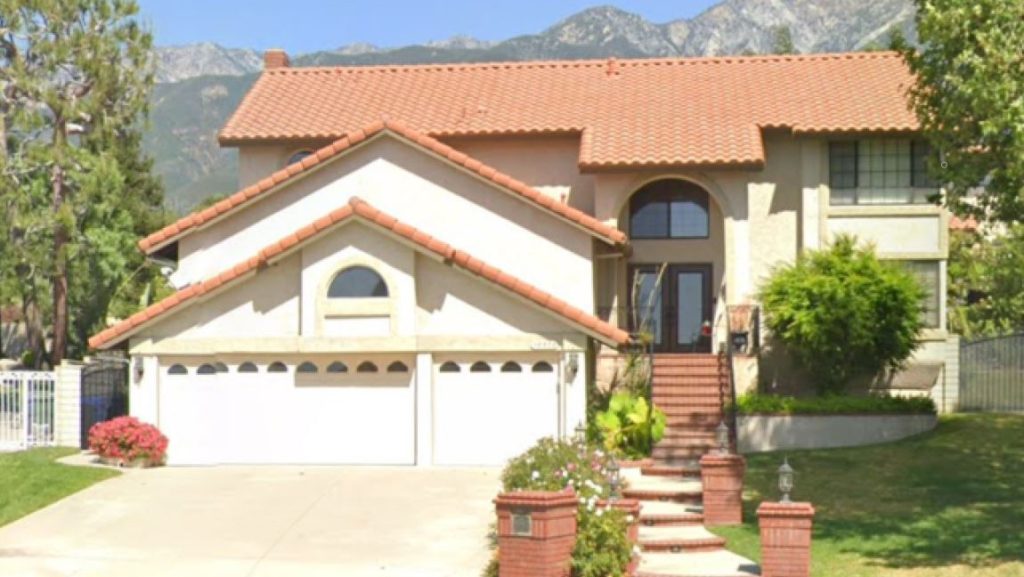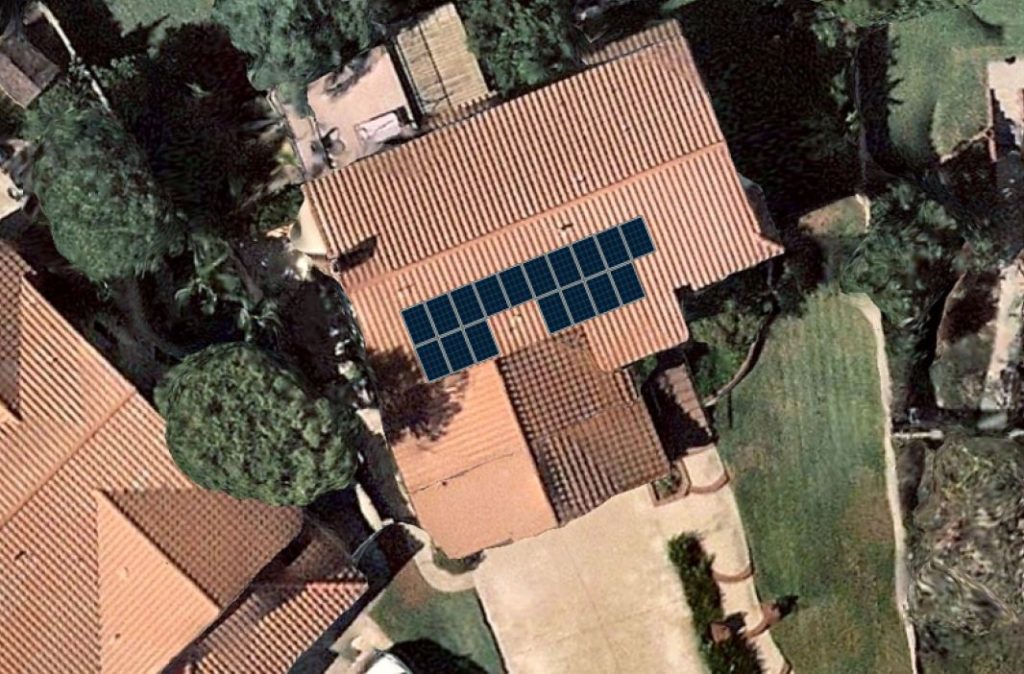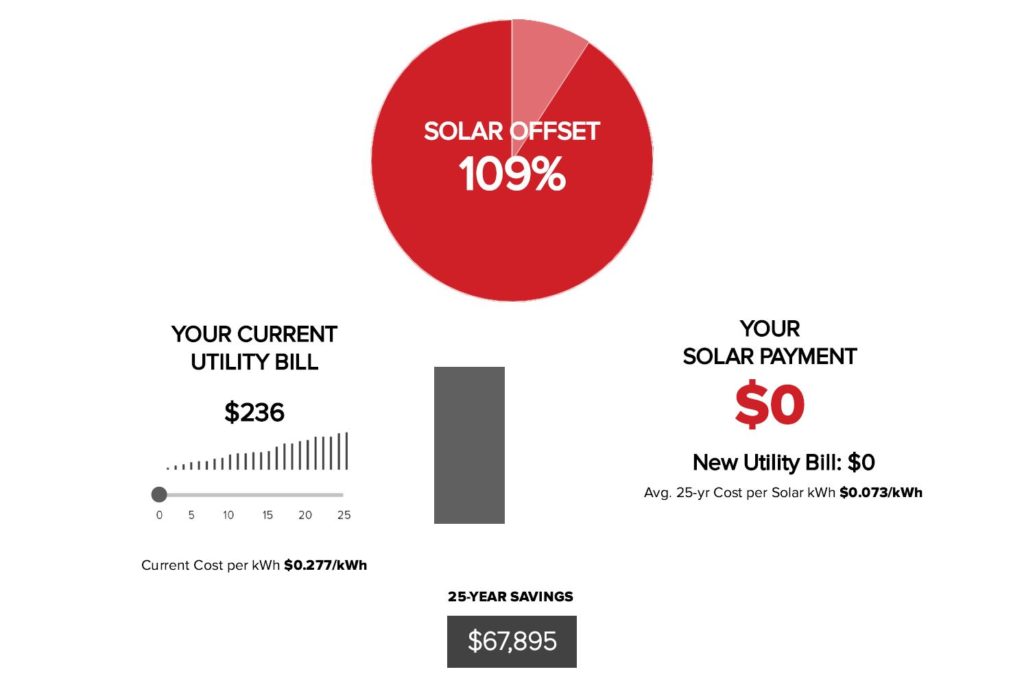Residential Solar, Part 1
Our house in sunny Southern California was built in 1989. Prior to us buying it in 2018, it was occupied by renters. We have made many improvements inside and out. We love this home and don’t plan to move. Investing in photovoltaic to generate electricity has never been more economical. The federal government offers a 30% tax credit on such investment in solar equipment and installation costs. This brings the break even time frame down to six and a half years. We wanted to get battery storage as well, to protect us from blackouts. Recent changes to what the utilities will pay for solar generated power make it much more economical to store it rather than return it to the grid, provided you can afford batteries. We want to not be part of the problem, as I wrote in Climate Change and Kant. We liked the idea that the sun will give us the power to operate our car and our house.Many of our neighbors, maybe 20%, in this tract have solar, and we have seen solar panels installed on several houses just since we have lived here. We have also seen several roofs redone. The original builder used standard tar paper underlayment beneath the concrete tiles, and it is overdue for replacement. We have explained this to every solar provider we have talked to, and to every roofer. The solar providers say that they will check it when they come to install the panels and if it needs work, it will be up to us to get it done before the panels go up. The roofers say we should definitely get the roof right before installing solar, and then make sure the solar installers don’t break it.
We got quotes from three solar providers. By the way, in order to hire any of them, you have to sign a form attesting that you have read a pamphlet explaining residential solar provided by the State of California. The pamphlet suggests getting quote from at least three providers.
We got quotes from Tesla Solar, which is highly automated through their web site, SunRun, which has a marketing partnership with Costco, and Titanium Solar, which was referred to us by a neighbor whose project we observed and liked the looks of.
Tesla Solar seemed promising, despite their unhinged CEO. We love our Tesla Model 3. We made an appointment and spoke over the phone with a consultant for 30 minutes. The estimate the consultant gave seemed reasonable. We paid $100 deposit to have them create a custom design for us. That took nine days, and although they claimed we could modify it, we could find no way to do so. Tesla required us to approve the design before telling us the final cost. Since the design was quite a bit expanded over what the consultant had suggested, we thought it was too much. I felt disrespected by the whole process. I found the cancel link on the web site and used it. The $100 deposit was refunded to my credit card.
We spoke at length with two SunRun consultants. SunRun’s business model is that they own the solar equipment on your house, and you purchase electricity from them, rather than from Edison. They get the tax credit. You get a promise that your cost of electricity will not go up, and you won’t be affected by blackouts. We want to own the solar panels and batteries and get all the benefits. Despite claiming to offer that option, the first consultant named a price three times what we were hearing elsewhere. A week after I rejected that, another consultant called, saying he wanted to make sure I got the “Costco discount.” After another hour on the phone, his price was only double what we could get elsewhere.
Fortunately, Titanium Solar treated us in a respectful, professional manner. Their representative listened to what we wanted, and did not try to sell us more than we needed. They generated a slick document using satellite images, graphs, and graphics to present their proposal.
We explained our concern about our old roof to the Titanium rep. He said that they would do a site survey that would reveal if our roof would need repairs prior to solar installation. He implied that fixing it proactively, while certainly within our prerogative, might be wasteful since the roof would be covered by Titanium’s warranty once the panels were installed. We went along, believing that someone who understands roofing better than us would make the determination.
The site survey was done by a nice fellow who took a number of photographs of our house from the outside, and of the decking (plywood) from our attic. We asked him about the roof paper, which is called “underlayment.” He said he had felt a piece of it, but that his job was just to take the pictures. They were reviewed by someone offsite. To our surprise, our roof was approved for solar installation.
When installers came on the scheduled day, we asked their crew chief again about the underlayment. This unwittingly put him in an awkward position. He was not supposed to consult with clients about a job that was already approved. His unease became ours, and we deferred the installation until we could get the roof modernized.
The Titanium Solar rep provided numbers for four roofers he approved. I contacted three, and later contacted others I found on Yelp. Actually, I tried to contact one highly rated roofer on Yelp, but Yelp passed the inquiry on to every other roofer they knew. I was instantly inundated with calls and texts from roofers. Fortunately, Yelp stopped when I told them to.
Some of the roofers were able to provide a quote using technology, just knowing the address, without visiting the house in person. Others wanted to come to the house. The first one I contacted beseeched me, whether I hired him or not, not to use old school asphalt-impregnated felt for the underlayment. He recommended newer peel-and-stick synthetics, or at least synthetics installed with nails. If we hired him, the warranty would be valid after the solar panels were installed. He warned that other roofers might invalidate the warranty after solar installation. He suggested that we might be able to get a tax credit for the cost of the roof repairs, but we should check with our accountant. I checked on the IRS website, and found that the tax credit did not extend to roof repairs made in preparation for solar installation. I’m sure that many have claimed them and got away with it.
Other roofers were equally adamant that two layers of 30 pound felt were the tried-and-true means to waterproof our roof, even with solar panels. For all I know, they may be right. We chose a roofer who came to the house and talked to me. He inspected the attic. I asked him for quotes on both the 30 pound felt and the peel-and-stick that he recommended. He said there would be a small difference, which astonished me. Later he informed me that his boss would not let him quote the felt, because the peel-and-stick was the right product to use. The quote was ultimately quite reasonable. It was a little more than the ones I got for double-layer felt, but considerably less than the first roofer, the one who insisted on the synthetic underlayment. This is the bid we accepted.
I am excited to get this work done. The roofers hope to start next week, the second week of August 2023. The work should take a little over a week. The city permit is the current hurdle holding things up. Once the roof is done, we can schedule the solar installation, which should take only one day.










